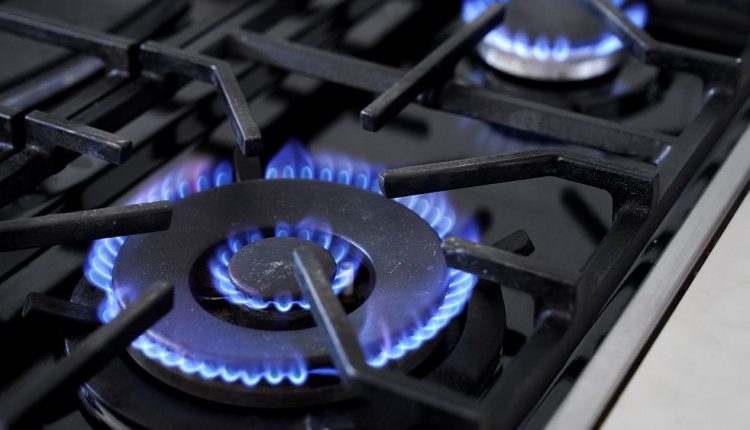One year ago, European politicians were in a state of panic watching wholesale gas prices break all-time records.
The numbers seemed to be in the grip of an irrepressible force: August 2022 began with the Title Transfer Facility (TTF), Europe’s leading hub, trading gas at €145 per megawatt-hour (MWh), an alarming level.
Two weeks later, the TTF broke through the €200 MWh barrier for the first time ever. By 26 August, the TTF did the unthinkable: it reached €300 MWh.
Suddenly, the prospect of the European citizens, accustomed to decades of prosperity, being subject to rationing and blackouts went from far-fetched to plausible.
“Gas prices have broken a new record. How high can they go?” read the top line of a Euronews article published that very week.
The headline, while dramatic, encapsulated the atmosphere of uncertainty and anxiety – a polite euphemism for hysteria – that characterised the worst times of the energy crunch, an unheard-of phenomenon unleashed by the COVID-19 pandemic and exacerbated by Vladimir Putin’s decision to launch a war against Ukraine.
Back then, no one could convincingly answer the “how high” question. But today, a year later and with the benefit of hindsight, we can: after hitting the €300 MWh ceiling, Europe’s gas prices began a steady decline and fell back to double-digit territory.
Last Friday, the TTF closed trading at almost €35 MWh – an 88% decrease compared to the all-time peak achieved in August 2022. This brings the continent closer to the traditional patterns seen before the pandemic when prices, sustained by Russia’s abundant and cheap deliveries, used to reliably range between €15 and €25 MWh.
The drastic turnaround represents one of Europe’s greatest feats since the Kremlin ordered its troops to cross into Ukrainian territory and irreversibly transformed the long-established structure of global energy markets.
Although policymakers in Brussels have been quick to congratulate themselves on the geo-economic victory, the key to success lies in an intricate combination of factors, including a milder-than-usual winter that dented demand for heating.
Chief among them is the extraordinary effort that European households and, in particular, European industry undertook to cut down their use of gas in a desperate attempt to temper their skyrocketing bills. Heat pumps, rooftop solar, thermal insulation and turtlenecks became popular overnight.
Although the EU introduced unprecedented objectives to save energy, consumers defied expectations and slashed their consumption well beyond the desired target: the bloc’s consumption of gas dropped by 19.3% between August and January, easily surpassing the 15% goal that member states had set last year – on a voluntary basis. The savings policy proved so effective that it was later extended until March 2024.
For the International Energy Agency, the behavioural changes have been so profound that they might herald a new era of how energy is consumed.
“Some of these factors can be considered cyclical or temporary – such as price-sensitive fuel switching or weather effects,” the agency said in a report published earlier this year. “Others, such as renewable capacity additions, efficiency improvements and sales of heat pumps, are structural – laying the foundation for lasting reductions in gas demand.”
“There are also less desirable structural changes, such as permanent closures of factories or businesses,” the report added.
With this fresh understanding, the EU is no longer fearing the 2023-2024 winter.
Tanks of liquefied natural gas (LNG), multiple deals with non-Russian providers, a new scheme of common purchases and continued energy savings are keeping gas supplies at affordable prices – or at least as affordable as they can get in wartime. Underground gas storage is currently at over 92% of capacity, a promising sign given that the bloc’s collective obligation is to reach 90% by 1 November.
But volatility has not disappeared for good – it has simply become more manageable, says Simone Tagliapietra, a senior fellow at Bruegel, an economic think tank.
“Even if prices are now much lower than last year, they remain volatile. And whatever happens on the supply or the demand side can impact and make the price fluctuate pretty strongly on a daily or weekly basis. This is part of a new normal of the European gas market,” Tagliapietra told Euronews in an interview.
“The volatility is always in the order of 5%, 10% or 20% fluctuation. It’s nothing as dramatic as we have seen.”
As we turn the tide and leave the panic behind, the expert adds, governments should phase out the massive subsidies they put in place during the crisis and instead focus on targeted support for the most vulnerable sectors of the population. This recommendation has also been voiced by the European Commission, which worries the constant injections of public money could distort the market and lessen the motivation to save energy.
“Of course, everyone needs to take action,” Tagliapietra said. “We are not in the middle of the crisis but it’s still important to make cautious use of gas in the winter to come.”
Read the full article here

